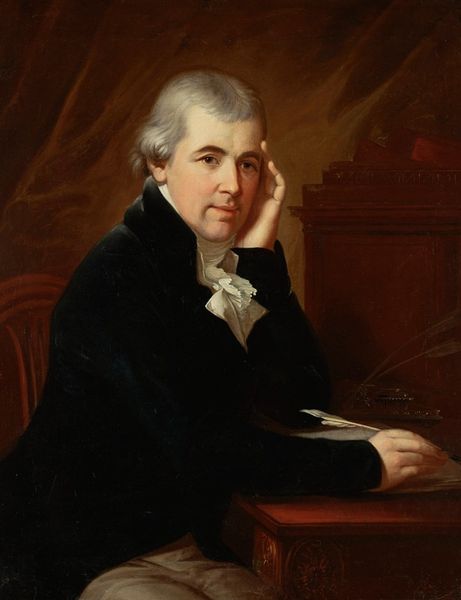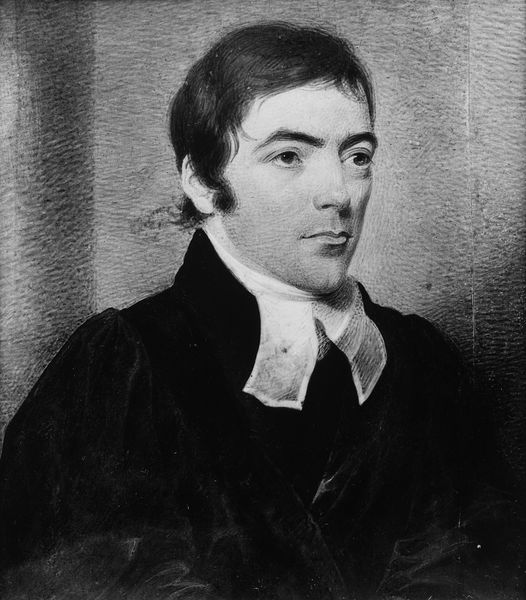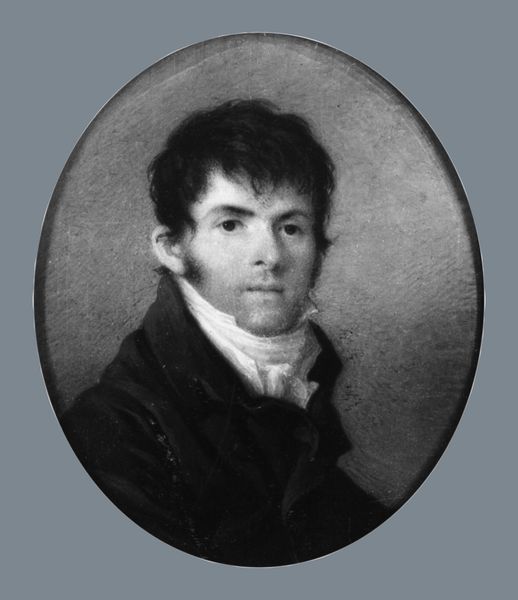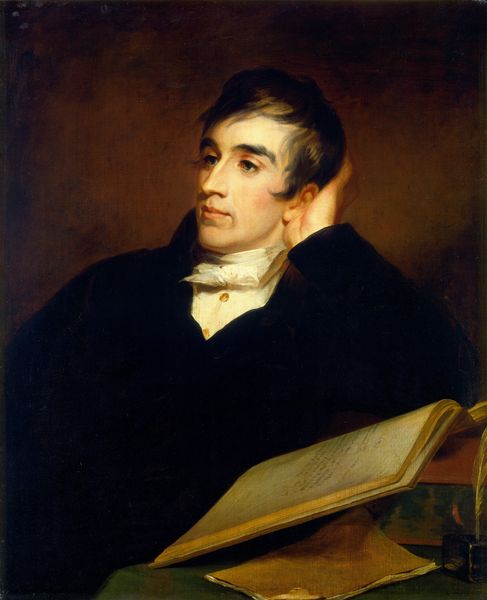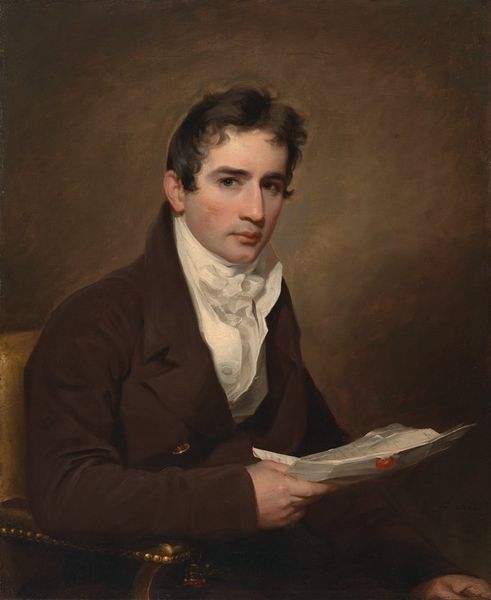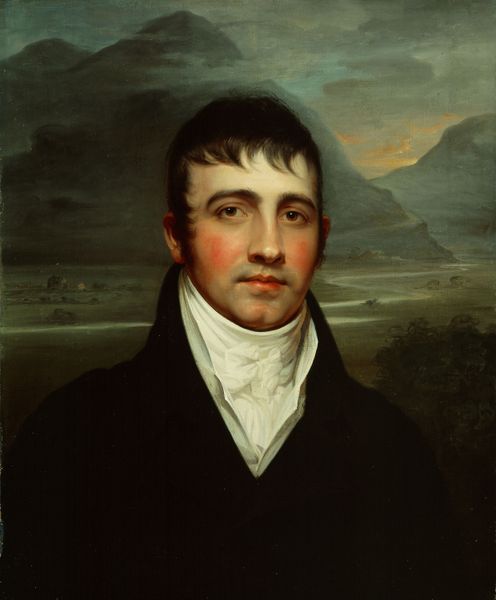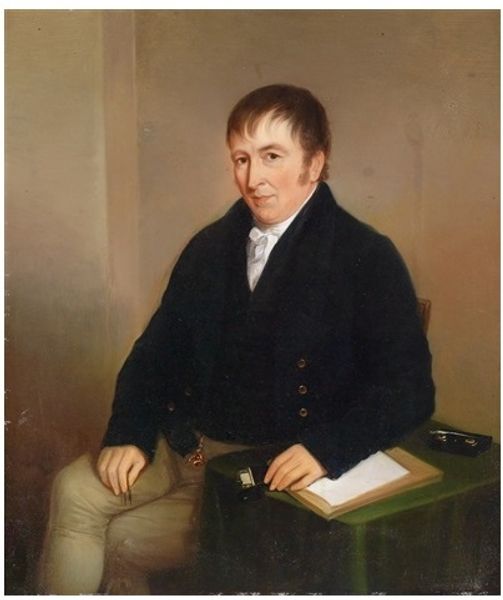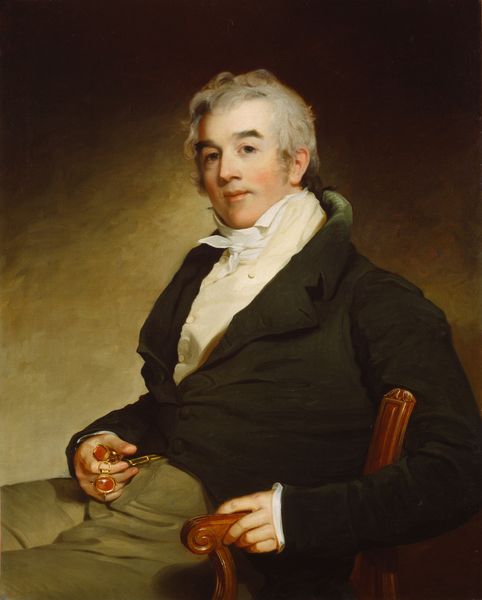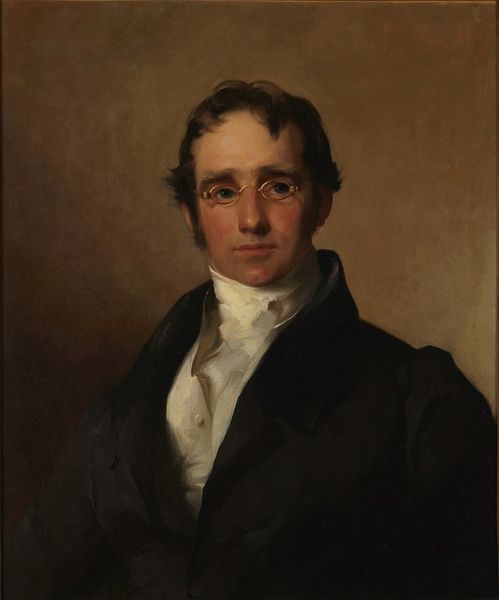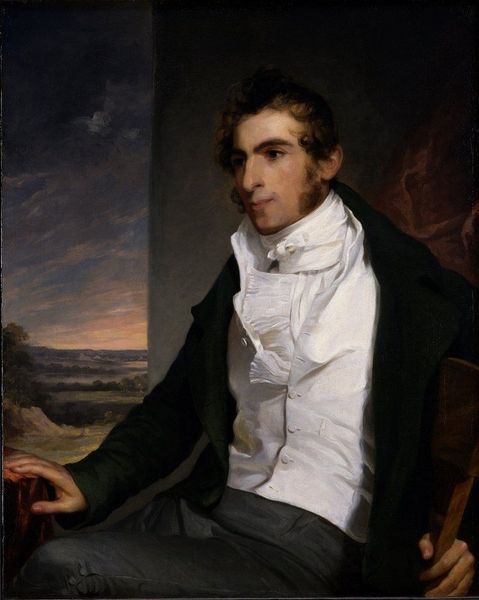
painting
#
portrait
#
figurative
#
portrait
#
painting
#
portrait subject
#
portrait reference
#
portrait head and shoulder
#
romanticism
#
portrait drawing
#
history-painting
#
facial portrait
#
portrait art
#
fine art portrait
#
celebrity portrait
#
digital portrait
Copyright: Public Domain: Artvee
Curator: Here we see Thomas Sully's "Dr. Joseph Klapp," painted in 1814. Editor: What strikes me first is its contemplative mood. The subject is posed in thought, his hand gently supporting his head. It’s a pose of quiet intensity. Curator: Indeed. Sully masterfully employs chiaroscuro, the dramatic contrast of light and dark, to sculpt Dr. Klapp's face. Notice how the light falls predominantly on his face, drawing our attention to his gaze and intellectual expression. The dark background and coat serve to enhance this effect. Editor: The portrait was made at a fascinating moment for American art and science. Physicians like Dr. Klapp were key figures in shaping civic life in a time of great demographic and political transformation. How might Sully be commenting on the role of these physicians? Curator: Well, in its construction, there's a strategic use of compositional balance and form, almost neoclassical. It avoids unnecessary ornamentation, focusing on conveying intellect and character through line and light. Editor: That said, the inclusion of books hints at something beyond just portraying an individual. They serve as cultural artifacts, suggesting Klapp’s engagement with learning and contribute to the public’s understanding of what a learned man in that period represented. This undoubtedly also appealed to potential portrait buyers and collectors who shared and reinforced this worldview. Curator: Absolutely. Also, note how Sully renders texture, particularly in the fabric of the coat and the delicate rendering of the skin. This attention to material detail, although secondary to the face, anchors the figure in reality, enhancing its immediacy and presence. Editor: And the portrait would be strategically displayed for the person of significance and their circle, demonstrating honor but also acting as a medium to bolster claims of prominence, legacy and historical contributions during and after Dr Klapp's life. Curator: Precisely. In essence, Sully’s portrait functions not just as an aesthetic object, but also a historical artifact loaded with semiotic weight. Editor: Indeed, this canvas acts as both a symbol of individual identity and as evidence of the subject’s place in the history of the era. Curator: Examining the interplay of light, shadow, and texture alongside its representational function reveals much about Sully’s art and the cultural currents it reflects.
Comments
No comments
Be the first to comment and join the conversation on the ultimate creative platform.

